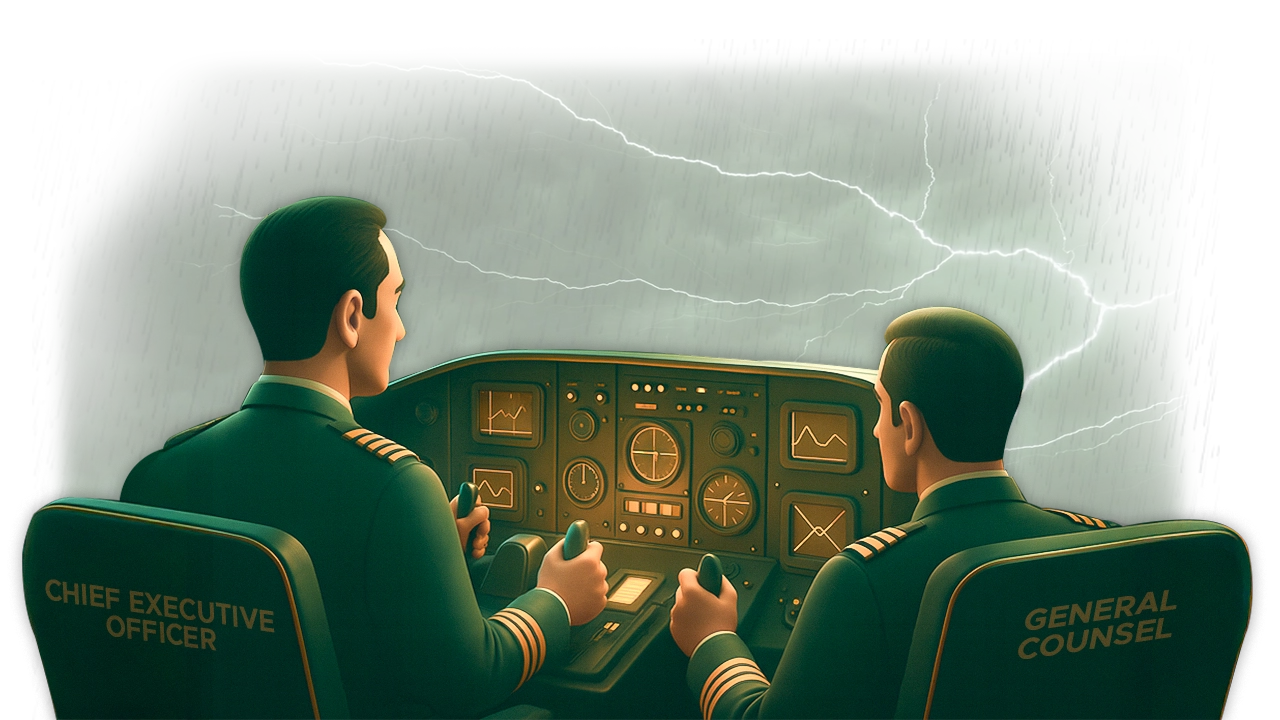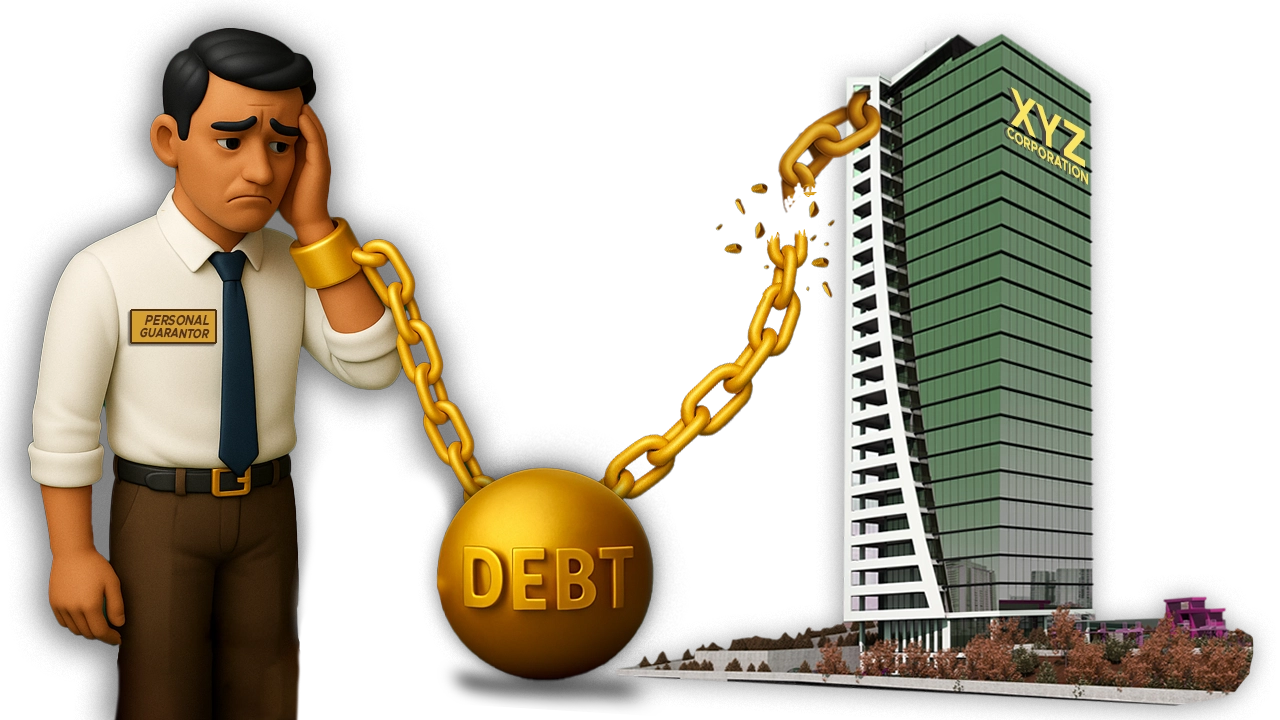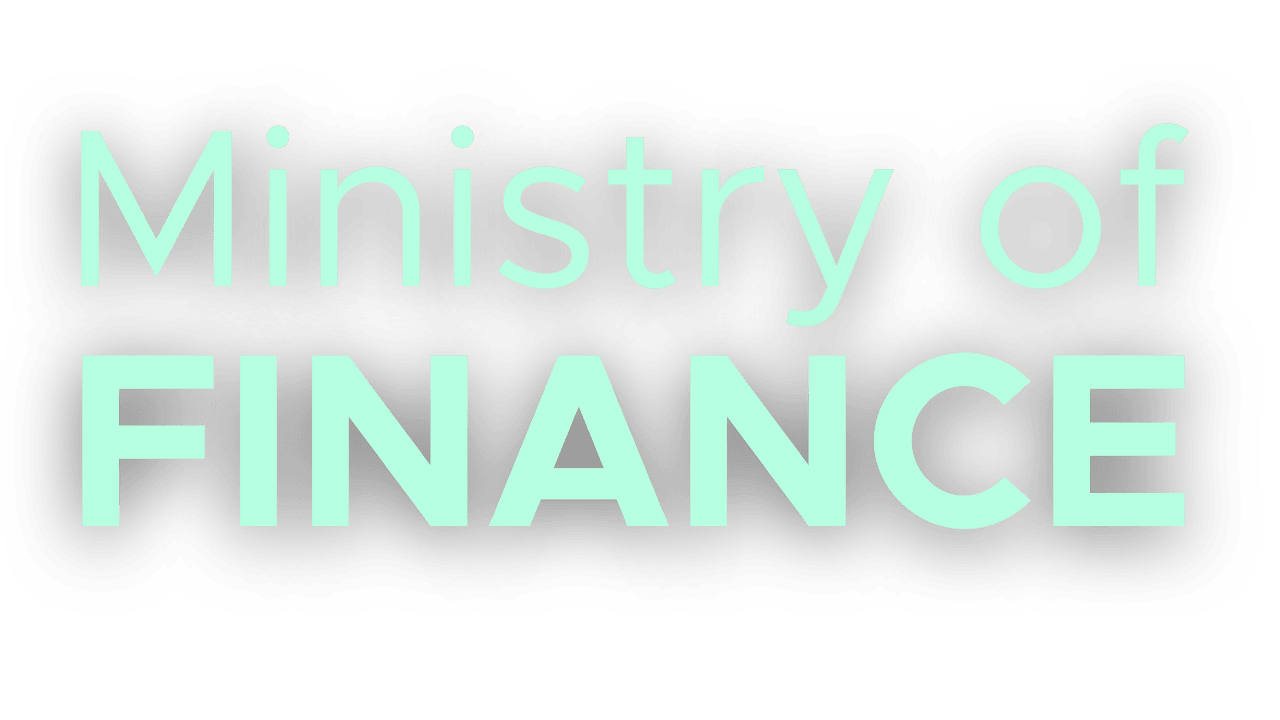Introduction
In the turbulent world of modern business, the question for any corporation is no longer if a crisis will hit, but when. The catastrophic events that have historically crippled global corporations—from the financial implosion of Enron due to systemic accounting fraud to the profound environmental and reputational disaster of BP’s Deepwater Horizon oil spill—all underscore a sobering truth: a corporation’s fate in its darkest hour often rests on the shoulders of its leaders.
While the CEO charts the course, the General Counsel (GC) must be the ship’s navigator, the one who understands the treacherous currents of legal risk, regulatory compliance, and public perception. The current crisis has proven to be a textbook case where a strong CEO-GC partnership isn’t just an asset; it’s the anchor that prevents the business from drifting into ruin.
How have past General Counsels saved their companies from crippling disasters?
The history of corporate catastrophe is also a history of crisis management—both excellent and abysmal. Consider Johnson & Johnson’s (J&J) Tylenol crisis in 1982. When cyanide-laced capsules tragically killed seven people, the company faced an unprecedented external attack. J&J’s swift, decisive, and transparent response—an immediate, national recall of 31 million bottles—became the gold standard for crisis management. This response was driven by a core value: prioritizing public safety over short-term financial concerns. The legal team’s role in coordinating with law enforcement, ensuring legal compliance on the recall, and framing a message of complete accountability was crucial in saving the brand’s credibility.
Contrast this with BP’s response to the 2010 Deepwater Horizon spill. Initial communications, often guided by legal advice that focused on minimizing liability, were perceived by the public as dismissive and lacking empathy, damaging the company’s reputation for years. An Associate General Counsel for BP, reflecting on the experience, described the legal response as a “monumental, spare-no-expense global evidence gathering, retention, and analytics challenge,” underscoring the all-consuming legal fallout when the initial, holistic crisis strategy fails to balance legal risk with public trust. Similarly, when Equifax suffered a massive data breach in 2017, the company’s six-week delay in disclosure and its confusing, sometimes defensive, communication strategy eroded public trust, triggering a cascade of regulatory investigations and consumer lawsuits. The lesson is clear: a GC’s role is not merely to mitigate lawsuits, but to advise on a course of action that secures the company’s long-term survival, which is invariably tied to its reputation.
What unique duties fall to the General Counsel when a company is under duress?
When a company is under duress, the GC’s dual areas of responsibility—managing the corporate legal function and safeguarding the business against new risks—coalesce into a singularly critical mandate. The GC must simultaneously “see the forest and the trees.” This means examining the core issue while also tracking its global legal, regulatory, and commercial ramifications. For instance, in a supply chain crisis, the GC isn’t just reviewing disrupted contracts; they’re coordinating the review of government aid programs and assessing new M&A possibilities to shore up the business. This task requires them to be both a detailed person—steeped in facts—and a strategic leader.
A classic scenario illustrates this tension: when a catastrophic system outage struck a software company serving hundreds of auto dealerships, the CEO wanted to send a heartfelt message taking accountability. The legal counsel had to intervene, pointing out that such a communication, while empathetic, could be interpreted as an “open invitation to lawsuits,” requiring a delicate balance between legal prudence and necessary public empathy.
Furthermore, a key duty is to be present and coordinated at all times. Business runs 24/7 during a crisis, and the expectation is for the GC to be readily available. They must liaise with the head of corporate communications and other C-suite leaders to ensure a single, consistent, and “all in” strategy, because siloed communications often appear on social media in real time, turning minor missteps into major reputational crises.
How does a GC lead their team effectively while navigating challenging, often unpleasant, trade-offs?
A crisis is an opportunity for the GC to demonstrate superior leadership. This extends beyond the boardroom to the legal team itself. An effective GC empowers the crisis team, driving a decision-making process that listens to all stakeholders and accepts that tough trade-offs are inevitable. They must balance immediate risks (financial, reputational, political) with long-term ones, often advising the company to make a short-term sacrifice to secure the long-term game.
In leading their team, a GC must lead with strength and compassion, leveraging the skills of every team member and creating “stretch opportunities” for rising stars to shine on the front lines. The team leans on the leader for guidance and reassurance. The GC must be as forthcoming and transparent as possible, because the team will appreciate being “in the know,” even when the only honest answer is “I don’t know.”The CEO watches and evaluates how the GC leads their team in uncertain times, recognizing that the team will follow their leader’s example.
What is the most crucial work a GC must complete before the crisis hits?
The most sophisticated companies understand that the GC’s most vital contribution occurs long before the sirens blare. The role of the GC is increasingly defined by a focus on strategic risk management, moving legal counsel from a reactive cleanup crew to a strategic partner and proactive shield. This re-imagining is vital because the lessons of Boeing’s 737 MAX crisis—where a corporate culture placed profit over safety, leading to two fatal crashes—show that compliance with the letter of the law is often not enough. Today, there is a recognized gap between legality and reputation.
A proactive GC navigates this gap by ensuring early integration of legal perspective into strategic planning, which helps to prevent crises from escalating in the first place. They champion a Distributed Risk Mapping model where every business unit evaluates and scores its own risks, contributing to a “living matrix.” Front-line employees often see emerging risks before they become visible to legal teams. The GC is a risk arbiter, not just a lawyer, demanding transparency and encouraging a culture of whistleblowing as a crucial tool. They must also play an active role in the corporation’s Enterprise Risk Management (ERM) process, helping to identify and prioritize all potential threats, not just legal ones. This forward preparedness—including running crisis exercises and simulations that test the company’s legal agility—is what allows a company to respond quickly and effectively when the one-in-a-million, unanticipated crisis, such as a pandemic, inevitably strikes.
Finally, after the crisis subsides, the successful GC will drive the after-action review, mining the “treasure trove of lessons learned” to best prepare and plan for future crises, thereby shifting the company out of crisis mode and into a more resilient future.
Conclusion
What then, are the future takeaways from the General Counsel’s performance in the crucible of crisis? The central lesson is the permanent elevation of the GC from legal gatekeeper to Enterprise Risk Leader. Companies that thrive will recognize that legal expertise is now inseparable from business strategy, demanding GCs who are not just experts in law, but sophisticated arbiters of reputation, compliance, and corporate culture. The COVID-19 pandemic, for instance, illustrated the need to incorporate previously “unthinkable” scenarios into the Enterprise Risk Management (ERM) framework, demanding legal agility to navigate novel regulations and technology shifts. Moving forward, the most successful GCs will be those who drive the post-crisis process of meaningful after-action reviews, transforming painful lessons into proactive resilience. Their success will be judged not just on how many lawsuits were avoided, but on how quickly and responsibly they helped the company shift from crisis mode back to a stable, ethical, and successful “new business normal.”This new reality poses several critical questions for CEOs and Boards. First, “Is our legal department structured for prevention or just clean-up?” The focus must shift to early integration of legal counsel, turning them from emergency responders into strategic partners embedded in high-risk decision-making. Second, “Does our General Counsel possess the strategic foresight and compassionate leadership required to command a cross-functional crisis team?” The GC needs the independence to challenge the CEO and the compassion to lead a stressed team. Finally, as technology and social media accelerate the spread of information, the key question is, “How do we close the gap between what is legally compliant and what is societally acceptable?” The future-facing GC must cultivate a “North Star” culture that understands that public opinion is the ultimate arbiter, forcing companies to act beyond the letter of the law to maintain the trust essential for long-term survival.
Expositor(s): Adv. Anuja Pandit






